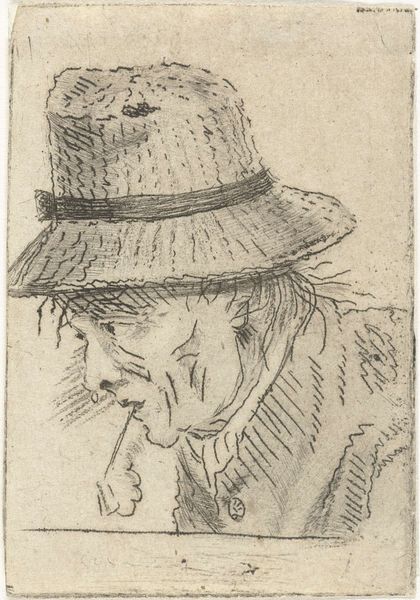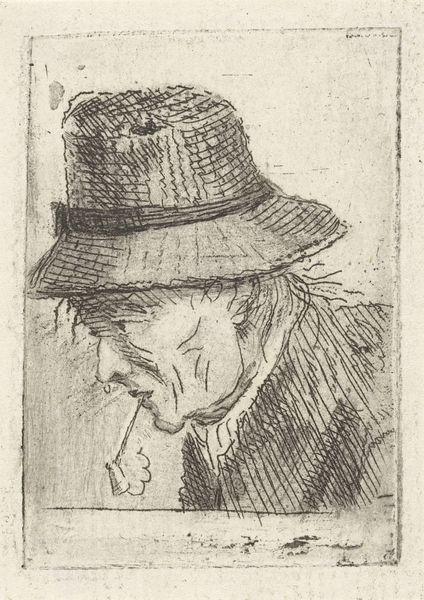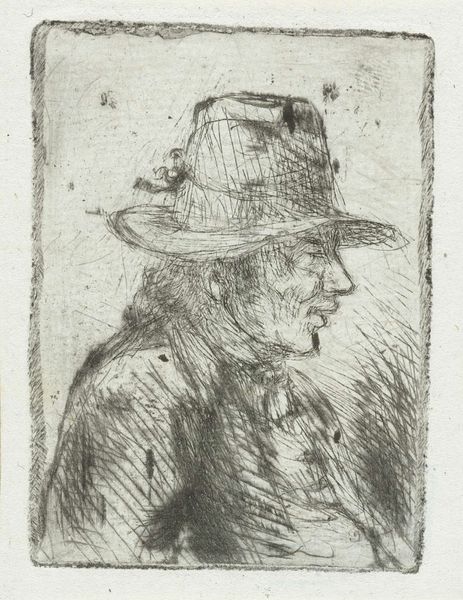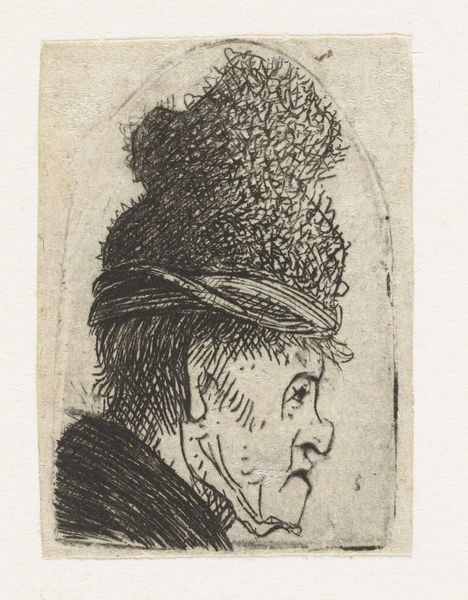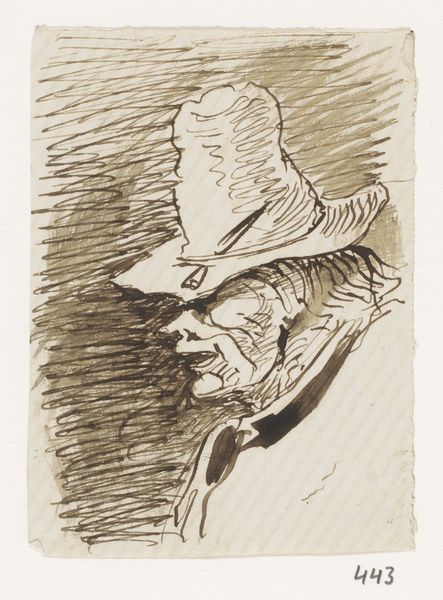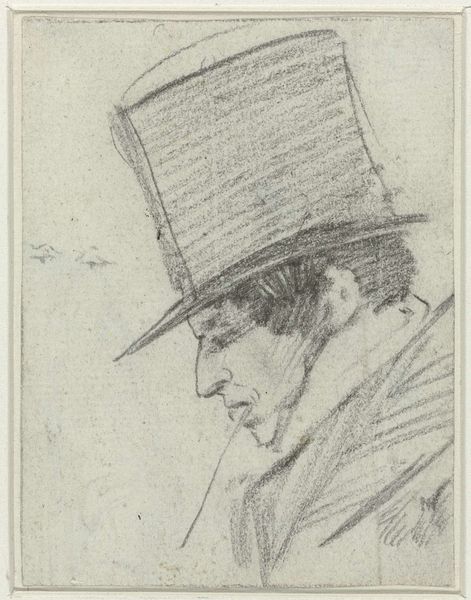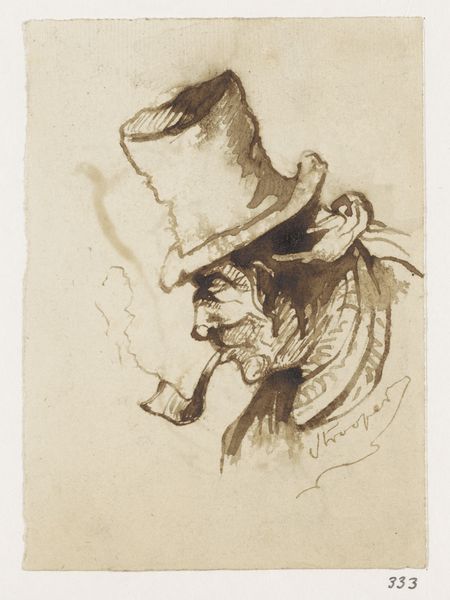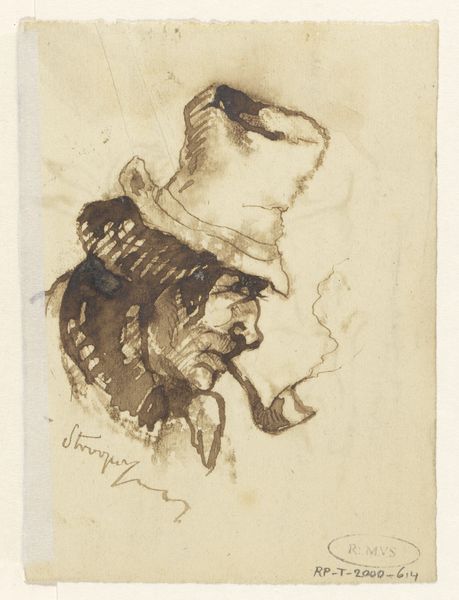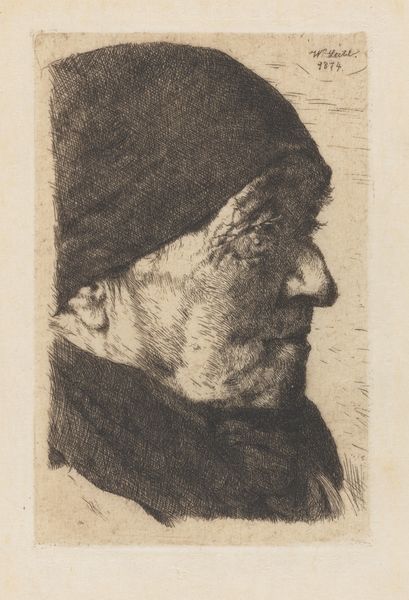
Dimensions: height 58 mm, width 40 mm
Copyright: Rijks Museum: Open Domain
Editor: This pen and pencil drawing, titled "Man's Head with Hat and Pipe," is attributed to Louis Bernard Coclers and thought to have been created between 1756 and 1817. I'm immediately struck by its delicate lines and somewhat melancholic feel. What do you see in this piece? Curator: It whispers of untold stories, doesn't it? The pipe, a recurring symbol of contemplation, sometimes relaxation. But also, during that period, linked with masculine identity and even rebellion. The hat shades his face, creating a psychological barrier. Notice how Coclers uses hatching to create shadow, deepening the mystery. Editor: Rebellion? How so? Curator: Consider the era. The late 18th century was a period of upheaval – the Enlightenment, revolutions brewing. Smoking was increasingly associated with intellectual circles, independent thinking, a move away from aristocratic norms. Do you see anything in the composition that emphasizes this? Editor: I suppose the lack of ornamentation, the simple, almost rough, quality of the drawing itself… Curator: Precisely. It's not a flattering portrait meant to convey status. It is intimate, capturing a moment of perhaps pensive…perhaps defiant… self-possession. His gaze is cast downward – inward perhaps? He is caught in thought. Consider what visual vocabulary can suggest the interiority of the human soul. Editor: It’s fascinating to think how something as simple as a pipe and a hat could carry so much meaning! I see so much more in the image now. Curator: Indeed. The artist imbued everyday items with symbolic weight, leaving a subtle mark. The image speaks across time.
Comments
No comments
Be the first to comment and join the conversation on the ultimate creative platform.
